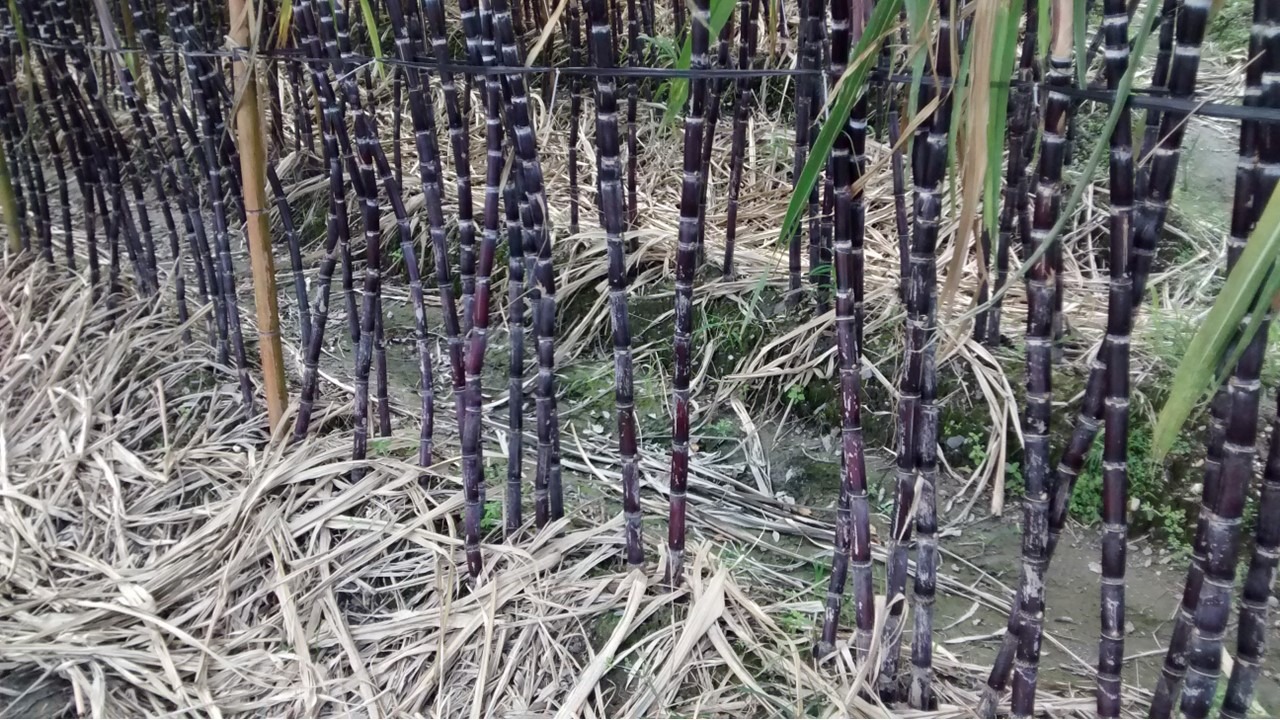Since the 1950s, the globe has created more than nine billion tons of plastic. With about 9 million additional tons entering the water annually, 165 million tons of it have already ruined our ocean. A large portion of plastic waste ends up in landfills, where it can take up to 500 years for it to break down and release harmful chemicals into the earth, or it pollutes the ecosystem. Only around 9% of plastic is recycled.
Conventional plastic is derived from raw ingredients derived from petroleum. Some claim that bioplastics, which include at least 20% renewable resources, hold the key to reducing the pollution caused by plastics. Reduced usage of fossil fuel resources, a smaller carbon impact, and quicker disintegration are some of the frequently mentioned benefits of bioplastic. In addition to being less harmful, bioplastic is free of bisphenol A (BPA), a hormone-disrupting substance that is frequently present in conventional plastics.

What is bioplastic?
Bioplastics can be produced entirely or partially from microorganisms like yeast or from sustainable biomass sources like corn and sugarcane. Under certain circumstances, certain bioplastics can undergo biodegradation or even composting. Because bioplastics derived from renewable resources may be organically recycled by biological processes, less fossil fuels are used, and the environment is safeguarded. Bioplastics are therefore biocompatible, sustainable, and mostly biodegradable. Bioplastics are now required in many industrial applications, including horticulture and agriculture, food packaging, composting bags, and hygiene. Moreover, bioplastics are used in consumer goods such as electrical, mechanical, and biological ones. An increasing amount of research is being done to investigate green materials and novel processing techniques in light of the growing need for plastic use worldwide. The latest breakthroughs in the material, processing, and applications of bioplastics are the main topic of this chapter.
Why don’t we use plastic? How does plastic pollute our planet?
Once heralded as a groundbreaking material due to its simplicity and adaptability, plastic has turned into an environmental monster that has left a lasting impact on our world. It is critical to consider why we no longer use plastic as carelessly as we once did and to comprehend how this seemingly harmless substance has transformed into a serious threat to the health of our planet as we deal with the effects of our addiction to plastic.
Plastic is unavoidably present in every aspect of our everyday life. Plastic is everywhere in our modern society, from home goods to packaging materials. Nevertheless, the environmental cost of plastic’s ease is astounding. The immense contamination that plastic use causes to our ecosystems is one of the main reasons that we should restrict its use.
Plastic pollution is a widespread and rapidly growing issue that seriously jeopardizes the biodiversity of our world. Since the 1950s, more than nine billion tons of plastic have been created, much of which ends up in our seas. Nowadays, almost 165 million tons of plastic debris pollute marine habitats, severely harming aquatic life. Plastic trash is commonly mistaken for food by marine creatures, which can result in ingestion and subsequent entanglement. The harmful impacts of plastic pollution are having severe implications, with marine species on the verge of extinction.
The issue is made worse by the durability of plastic. Conventional plastics survive in the environment long after their useful life has finished because they can take up to 500 years to disintegrate. The degradation of these polymers releases toxic compounds that worsen the condition of the soil and water. As pollutants seep into the food chain, they endanger not just the health of wildlife but also that of humans. Furthermore, the production of plastics is intrinsically associated with the depletion of non-renewable resources. Conventional plastics contribute to the overuse of fossil fuels as they are made from raw ingredients supplied from petroleum. This maintains our reliance on limited resources while simultaneously hastening climate change.
Beyond personal decisions, institutional measures are being made in an effort to reduce the usage of plastic. Communities, corporations, and governments are realizing more and more how important it is to implement comprehensive laws and programs that lower plastic output and improve recycling infrastructure. Proposals to outlaw plastic, encourage the use of alternative materials, and advance a circular economy are all positive moves.
Are bioplastics biodegradable?
The topic of whether bioplastics are indeed biodegradable is a crucial one, as they are frequently praised as an environmentally beneficial substitute for conventional plastics. Bioplastics get their basic ingredients from renewable sources like corn and sugarcane, or from microorganisms like yeast, in contrast to their petroleum-based competitors. It’s important to remember that not all materials that are referred to as “bioplastics” are naturally biodegradable, even if the phrase covers a variety of materials.
The unique composition and production methods of bioplastics determine their biodegradability. Certain bioplastics are made to decompose spontaneously in specific environments, mostly by biological processes. These circumstances might include exposure to heat, moisture, sunshine, or particular microbiological activity. Essentially, a bioplastic’s capacity to decompose depends on both its chemical makeup and the disposal site.
But it’s important to understand the difference between compostable and biodegradable bioplastics. When compostable bioplastics decompose, they release essential nutrients into the soil in addition to dissolving into natural components. This distinction is crucial because the ideal decomposition of biodegradable bioplastics depends on certain circumstances that are present in industrial composting facilities.
2 Types of bioplastics: PLA and PHA
– PLA

Polylactic Acid pellets
Polylactic Acid, commonly known as PLA, stands out as a leading player in the realm of bioplastics. PLA is a biodegradable and bioactive thermoplastic derived from renewable resources like corn starch or sugarcane. Its eco-friendly nature makes it an appealing alternative to traditional petroleum-based plastics.
The unique quality of PLA is that it decomposes organically, rendering it a more environmentally friendly choice. Microbial activities cause PLA goods to break down, lessening the environmental impact of persistent plastic waste. Notably, PLA’s adaptability and environmentally responsible reputation have helped it become more and more popular in a variety of applications.
Products made with PLA include food containers, packaging materials, throwaway cutlery, and even filaments for 3D printing. In addition to lowering reliance on fossil fuels, the use of PLA in these applications solves the problems associated with conventional polymers’ end-of-life. Because PLA is biodegradable and compostable, it supports a circular economy in which goods may be recycled in a method that doesn’t conflict with the environment. PLA and its varied spectrum of products appear as a viable answer, representing the promise for a more ecologically conscious and responsible approach to material consumption as we search for sustainable solutions to battle plastic pollution.
– PHA

Polyhydroxyalkanoates pellets
Polyhydroxyalkanoates, abbreviated as PHA, represent a revolutionary class of biodegradable polymers contributing to the shift towards sustainable materials. PHA is created by microbes via the fermentation of renewable materials like plant sugars or vegetable oils, in contrast to traditional polymers. Because PHA is biobased, it has less of an adverse effect on non-renewable resources and is an environmentally beneficial substitute.
The intrinsic biodegradability of PHA in a variety of settings, such as soil, water, and marine conditions, sets it apart. Products made of PHA have an amazing capacity to break down organically, providing a workable answer to the enduring issue of plastic pollution. PHA is highly versatile and may be used in a wide range of goods, including as medicinal uses, disposable items, packaging materials, and agricultural films. Because of its versatility, PHA is a good option for a number of businesses looking for environmentally friendly substitutes for conventional plastics. Furthermore, the breakdown of PHA yields biomass, carbon dioxide, and water with no hazardous byproducts left behind.
PHA and its wide range of goods come to light as a ray of hope in the worldwide movement towards eco-conscious methods and sustainable resources. PHA is at the front of the bioplastic revolution, paving the way for a more sustainable and peaceful coexistence with our planet by embodying the values of responsible consumerism and the circular economy.
The benefits of using bioplastics as alternative to plastics
The adoption of bioplastics as an alternative to traditional plastics offers a range of benefits that address environmental, economic, and health concerns. Here are some key advantages of using bioplastics:
Renewable Resources: Bioplastics are typically derived from renewable resources such as sugarcane, corn, or plant oils. Unlike traditional plastics that rely on finite fossil fuels, bioplastics contribute to a more sustainable and environmentally friendly material cycle.
Reduced Carbon Footprint: The production of bioplastics often results in a lower carbon footprint compared to conventional plastics. The use of renewable resources and the potential for carbon sequestration during the growth of biomass contribute to a more eco-friendly manufacturing process.
Biodegradability and Compostability: Many bioplastics are designed to be biodegradable or compostable under specific conditions. This means they can naturally break down into harmless substances, reducing the impact of plastic waste on the environment. Compostable bioplastics, in particular, contribute valuable nutrients to the soil during decomposition.
Support for Innovation: The growing demand for bioplastics encourages research and development, fostering innovation in material science and processing technologies. This ongoing exploration of greener materials contributes to the development of more sustainable practices within the plastics industry.
The benefits of using bioplastics as an alternative to plastics extend beyond environmental advantages to encompass economic sustainability and positive impacts on human health. The shift towards bioplastics reflects a commitment to a more responsible and harmonious relationship with the planet.
Four bioplastic products in our life
Bioplastics have gained prominence in various everyday products, offering sustainable alternatives to traditional plastics. Here are four bioplastic products commonly found in our lives:
Bioplastic Bags:
Application: Bioplastic bags serve as eco-friendly alternatives to traditional plastic bags for shopping or packaging.
Material: Compostable bioplastics are often used to produce bags that can break down naturally, reducing the environmental impact of plastic waste.
Bioplastic Cutlery and Tableware:
Application: Disposable cutlery and tableware, such as utensils and plates, are increasingly made from bioplastics.
Material: Bioplastics offer a sustainable option for single-use items, reducing reliance on non-renewable resources.
Bioplastic Plant Pots:
Application: Agriculture and horticulture industries utilize bioplastic plant pots.
Material: Bioplastics made from renewable sources are employed to create plant pots that can decompose naturally, providing an environmentally friendly option for nurseries and home gardening.
Bioplastic Disposable Cups:
Application: Bioplastic cups have gained popularity in the food and beverage industry, particularly for single-use applications.
Material: Compostable bioplastics are commonly used to produce disposable cups, offering a more sustainable choice for events, cafes, and take-out services.
Are there any better alternatives to bioplastics?
Determining the best alternative to bioplastics depends on the specific goals and environmental considerations. Some alternatives that are being explored or already in use include:
Paper and Cardboard:

Description: Traditional paper and cardboard packaging are renewable and biodegradable options.
Advantages: Often considered more environmentally friendly, especially when sourced from sustainably managed forests.
Glass and Metal:

Description: Containers made of glass or metal are durable and infinitely recyclable.
Advantages: Reduced environmental impact through recycling, and these materials do not degrade during the recycling process.
Silicones:

Description: Silicones are synthetic polymers made from silicon, oxygen, carbon, and hydrogen.
Advantages: Can be more durable and heat-resistant than some other alternatives, but they may not be as environmentally friendly as some bioplastics.
Bagasse Products:
Description: Bagasse products are eco-friendly alternatives derived from sugarcane waste, specifically the fibrous residue left after sugarcane is crushed for juice extraction. These products have gained popularity due to their numerous advantages in terms of sustainability and environmental impact. Products made from sugarcane of renouvo are great examples.
Advantages: Bagasse is a byproduct of the sugarcane industry, making it a renewable and abundant resource without the need for additional cultivation. Bagasse products are biodegradable, breaking down naturally into organic matter. This reduces environmental pollution and contributes to a cleaner ecosystem. The production of bagasse products generally has a lower environmental impact compared to traditional plastics, reducing reliance on non-renewable resources.
The effectiveness of these alternatives depends on factors such as the intended application, environmental impact, cost, and societal acceptance. It’s essential to consider the entire life cycle of a material, from production to disposal, to make informed choices that align with sustainability goals. Additionally, ongoing research and innovations in materials science continue to bring forth new and improved alternatives to address the environmental challenges associated with plastics.
Go plastic-free: We have more and better choices
In conclusion, the imperative to go plastic-free is underscored by the myriad environmental challenges posed by traditional plastics. However, the journey toward a plastic-free future is not marked by limitations but by opportunities. We have at our disposal more and better choices, with sustainable alternatives such as bioplastics, bagasse products, and various innovative materials that align with our commitment to a healthier planet.
In this era of abundant and better choices, going plastic-free is not merely a choice; it is a pledge to safeguard the Earth for generations to come. Together, we can shape a world where sustainability is paramount, and the legacy we leave is one of responsible stewardship, fostering a harmonious coexistence with our precious planet.













